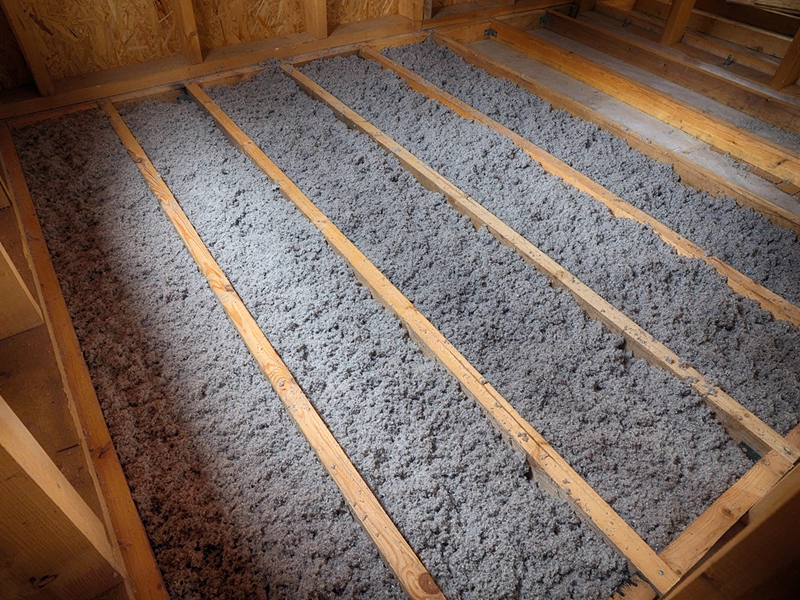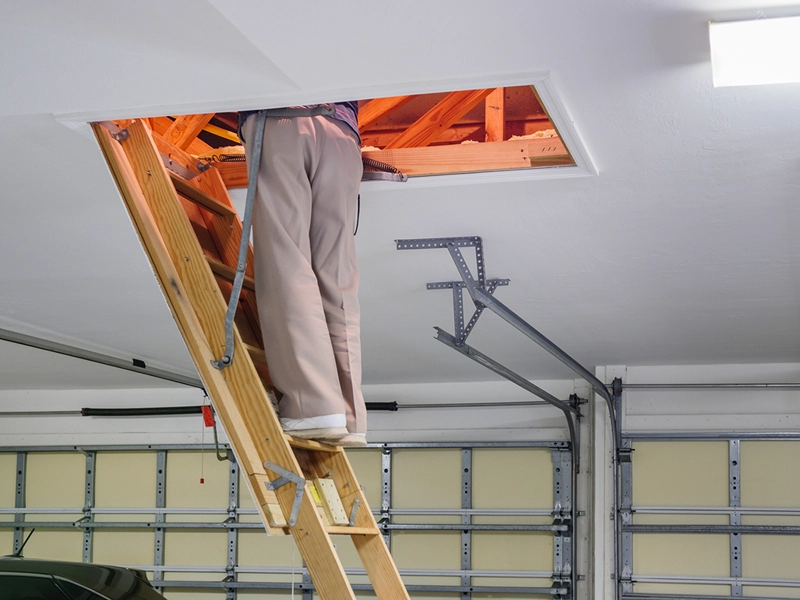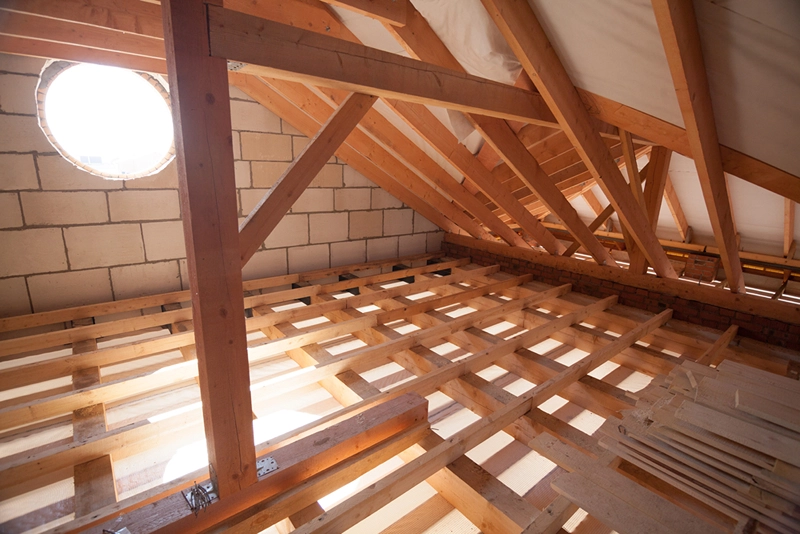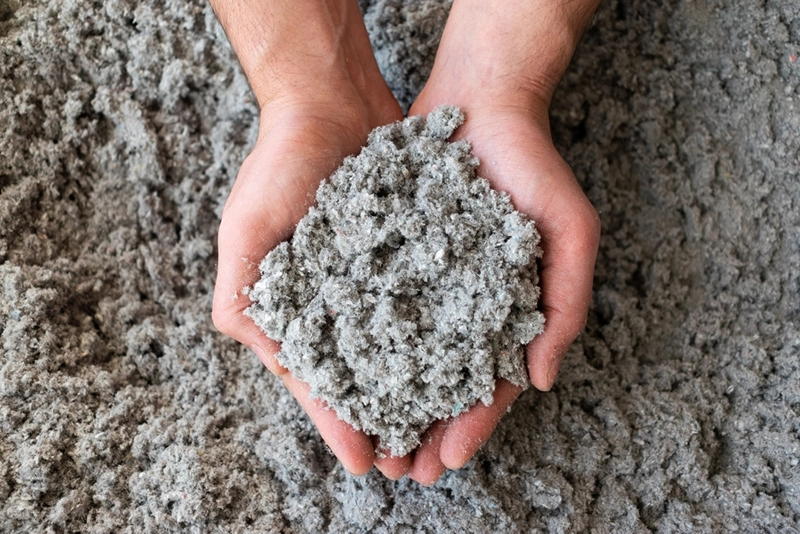How to Install Blow-in Insulation in Your Attic

Understanding Blow-in Insulation
Insulation installed by blowing or spraying into the target area is called blow-in insulation, also known as loose-fill insulation. It is frequently used in attics because it is simple to fill in gaps and voids and offers efficient thermal resistance. Mineral wool, fiberglass, or cellulose are often used in blow-in insulation.
Preparing for Installation
Preparing your attic before you begin the installation process thoroughly is crucial. Ensure there are no leaks or moisture problems in the attic, and remove any objects or debris obstructing the installation. It’s also a good idea to put on safety gear like gloves, protective clothing, and a dust mask to reduce possible health hazards.
Gathering the Necessary Tools & Materials
You will require the following equipment and supplies to install blow-in insulation in your attic:
- Blow-in insulation machine or blower
- Insulation material (cellulose, fiberglass, or mineral wool)
- Insulation hoses
- Insulation netting (if required)
- Measuring tape
- Utility knife
- Staple gun
- Extension cords
- Attic access covers
Ensuring Safety Precautions
When performing work in the attic, security should come first. You prevent mishaps, switch off any electricity in the area and use appropriate illumination. It is also advised to have a second person nearby in case of emergency.
Marking the Attic for Insulation
Mark the locations in your attic where the blow-in insulation will be installed before you begin the installation. Mark any obstructions, such as vents, recessed lights, or electrical lines, to ensure the insulation doesn’t cover them.
Installing Ventilation Baffles
To maintain optimum airflow in your attic’s soffit vents, ventilation baffles must be installed. Ventilation baffles ensure fresh air can enter the attic by preventing the insulation from obstructing the vents.
Preparing the Insulation
To prepare the blow-in insulation, follow the manufacturer’s instructions. It may include adding water or fluffing the material to attain the proper density. Make sure the insulation has the right amount of moisture before installing it.
Starting the Blow-in Insulation Process
The blow-in insulation machine or blower should be connected to the insulation hose. Work your way toward the attic access point from the furthest end of the attic. Distribute the insulation evenly and slowly throughout the attic, not obstructing any vents or covering any obstacles.
Distributing the Insulation Evenly
Sweep the insulation hose across the attic floor to distribute the material evenly and obtain consistent coverage. Ensure the insulation reaches all the nooks and crannies by taking time.
Filling Gaps & Hard-to-Reach Areas
Filling in your attic’s cracks, voids, and difficult-to-reach spaces should receive extra care. These spaces are prone to air leaks, which can significantly affect how well the insulation performs as a whole. Direct the material into these spaces using the insulation hose to ensure they are filled.
Checking for Proper Insulation Depth
As you work, check the insulation depth frequently to ensure maximum insulation efficiency. Different attic insulation depths may be advised depending on where you live and the climate there. To ensure it complies with the necessary criteria, measure the insulation depth with a ruler or measuring tape.
Insulating Attic Access Points
Attic access points, such as attic doors or hatches, should be insulated. Use insulating material around these openings to stop air leaks and keep the attic’s thermal resistance constant.
Cleaning Up & Disposing of Waste
Once the blow-in insulation installation is complete, clean up any extra materials or trash in the attic. Local laws and regulations should dispose of waste.
Inspecting the Insulation
Examine the insulation to ensure it is evenly distributed and completely covers all areas after the installation. To reach the desired amount of insulation, make any required alterations or additions.
Maintaining & Upgrading Insulation

For insulation in your attic to remain effective over time, it must be maintained and upgraded. Here are some thorough explanations of how to improve and sustain insulation:
· Regular Inspections
Check the insulation’s condition periodically in your attic. Keep an eye out for damage indicators like water stains, mold growth, or pest infestations. Any problems should be resolved immediately to protect the insulation from additional harm.
· Addressing Air Leaks
If your attic has air leaks, more than insulation is needed to provide the highest energy efficiency. Fill in any openings, gaps, or cracks in the attic’s framework, especially those around chimneys, pipes, and electrical fixtures. Use expanding foam, weather stripping, or caulk to cover these gaps successfully.
· Upgrading Insulation
Increasing insulation might increase energy efficiency if your existing insulation needs to be updated or improved. For instance, you might choose fiberglass insulation to spray foam insulation, which has more excellent air-sealing capabilities and higher R-values. To select the best insulation for your attic, weigh your alternatives carefully and talk to professionals.
· Insulation Removal & Replacement
Insulation may sometimes suffer irreparable damage or become infested with bugs or mold. The old insulation must be taken out and replaced in such cases with new insulation. The old insulation can be safely removed and disposed of by qualified insulation contractors, ensuring a tidy and efficient installation of the new insulation.
· Proper Ventilation
Maintaining the effectiveness of the insulation requires adequate attic ventilation. Good ventilation helps avoid moisture buildup, which can reduce the insulation’s efficiency and promote mold formation. Ensure your attic has enough vents; if required, improve ventilation by adding attic fans or ridge vents.
Conclusion
Installing blow-in insulation in your attic is a wise investment because it will increase your home’s energy efficiency. You may effectively install blow-in insulation and take advantage of a properly insulated attic by following the suggested methods and taking the required safety precautions.



